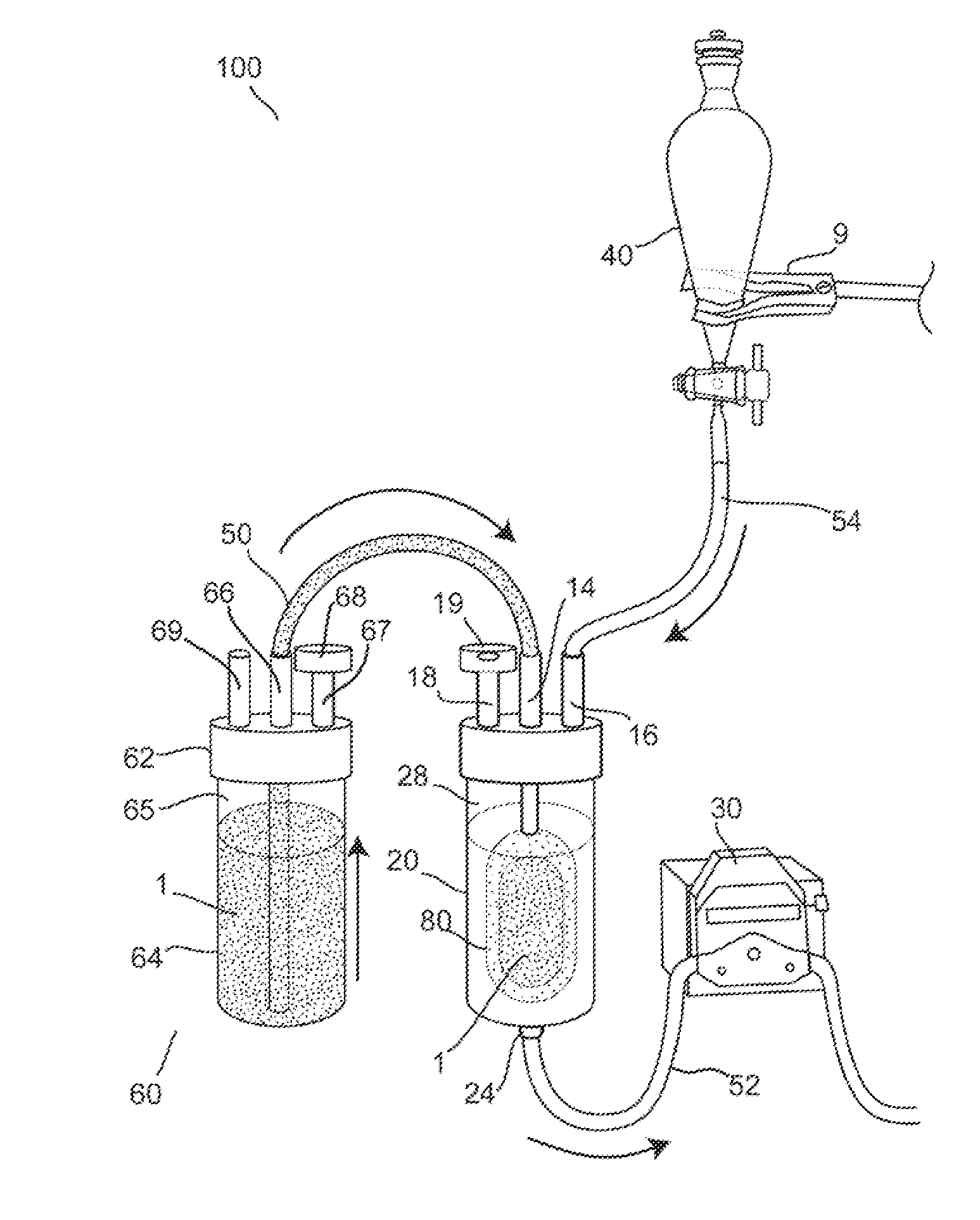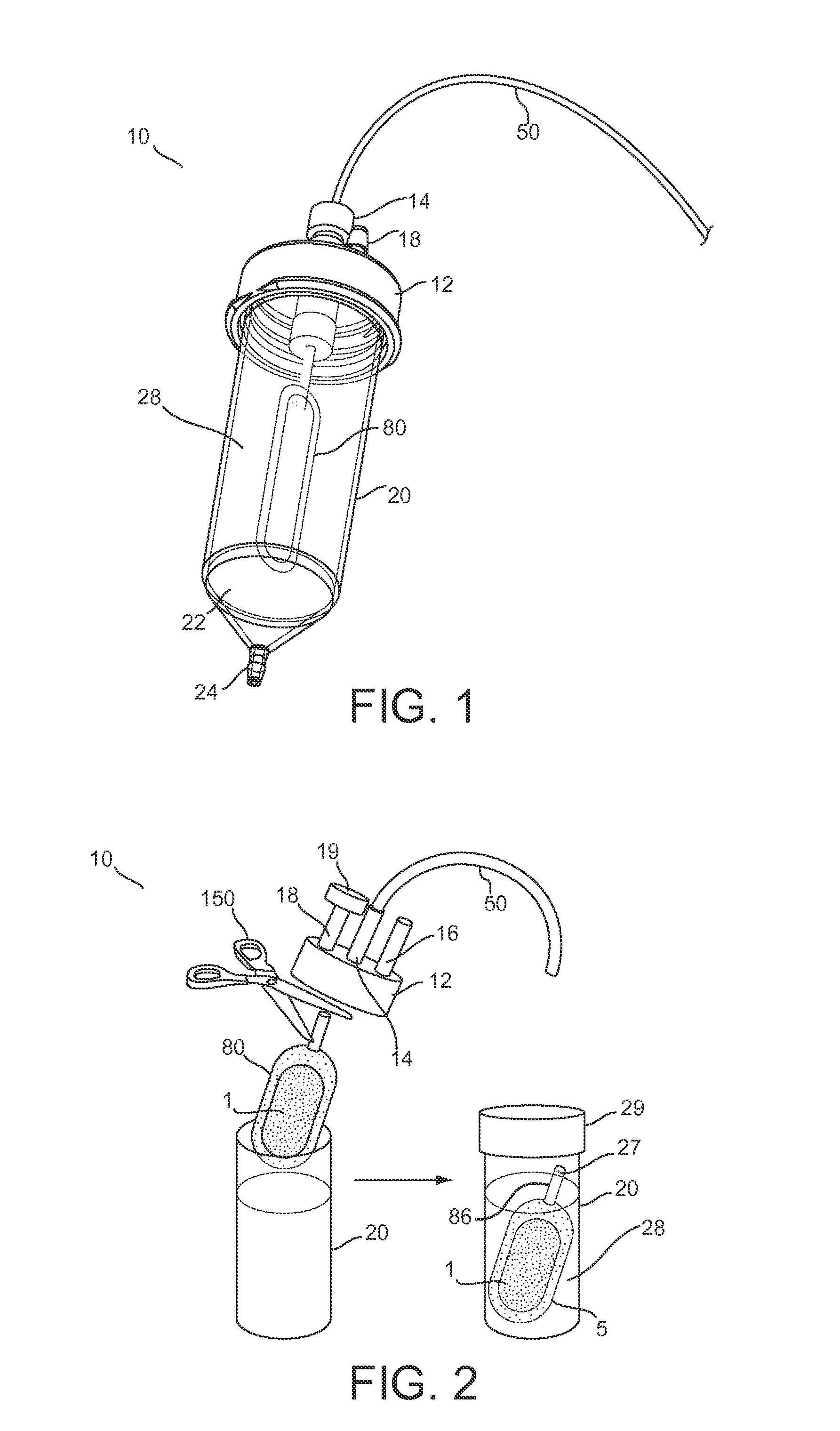Loading system for an encapsulation device
a technology of encapsulation device and loading system, which is applied in the field of cell encapsulation and cell therapy, can solve the problems of poor blood sugar regulation, high shear, and low blood sugar regulation, and achieve the effects of eliminating cross contamination, eliminating high pressure and hydrodynamic focusing, and eliminating high shear
- Summary
- Abstract
- Description
- Claims
- Application Information
AI Technical Summary
Benefits of technology
Problems solved by technology
Method used
Image
Examples
Embodiment Construction
[0073]Further features and advantages of the invention, as well as the structure and operation of various embodiments of the invention, are described in detail below with reference to the accompanying FIGS. 1-22, wherein like reference numerals refer to like elements. Although embodiments of the invention are described in the context of loading an encapsulation device with insulin producing cells for the treatment of diabetes mellitus, one of ordinary skill in the art readily appreciates that the present invention is applicable to loading an encapsulation device with any type of living cells or mixtures thereof, including but not limited to hepatic cells, endocrine cells, skin cells, hematopoietic cells, bone marrow stem cells, renal cells, muscle cells, neural cells, stem cells, embryonic stem cells, lineage-restricted cells, progenitor cells, precursor cells, genetically engineered cells, tumor cells, and derivatives and combinations thereof for the treatment of one or more diseas...
PUM
| Property | Measurement | Unit |
|---|---|---|
| thick | aaaaa | aaaaa |
| volume | aaaaa | aaaaa |
| diameter | aaaaa | aaaaa |
Abstract
Description
Claims
Application Information
 Login to View More
Login to View More - R&D
- Intellectual Property
- Life Sciences
- Materials
- Tech Scout
- Unparalleled Data Quality
- Higher Quality Content
- 60% Fewer Hallucinations
Browse by: Latest US Patents, China's latest patents, Technical Efficacy Thesaurus, Application Domain, Technology Topic, Popular Technical Reports.
© 2025 PatSnap. All rights reserved.Legal|Privacy policy|Modern Slavery Act Transparency Statement|Sitemap|About US| Contact US: help@patsnap.com



